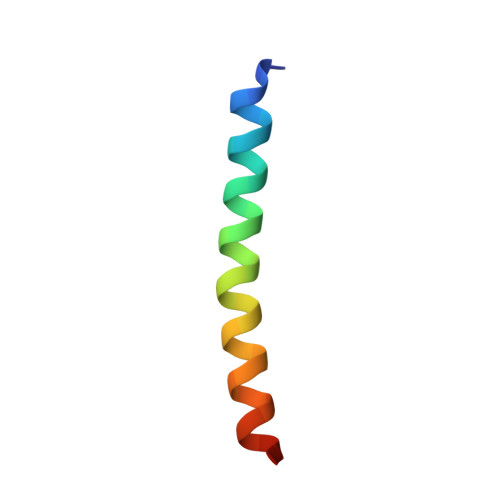Antiparallel four-stranded coiled coil specified by a 3-3-1 hydrophobic heptad repeat.
Deng, Y., Liu, J., Zheng, Q., Eliezer, D., Kallenbach, N.R., Lu, M.(2006) Structure 14: 247-255
- PubMed: 16472744
- DOI: https://doi.org/10.1016/j.str.2005.10.010
- Primary Citation of Related Structures:
2B1F, 2B22 - PubMed Abstract:
Coiled-coil sequences in proteins commonly share a seven-amino acid repeat with nonpolar side chains at the first (a) and fourth (d) positions. We investigate here the role of a 3-3-1 hydrophobic repeat containing nonpolar amino acids at the a, d, and g positions in determining the structures of coiled coils using mutants of the GCN4 leucine zipper dimerization domain. When three charged residues at the g positions in the parental sequence are replaced by nonpolar alanine or valine side chains, stable four-helix structures result. The X-ray crystal structures of the tetramers reveal antiparallel, four-stranded coiled coils in which the a, d, and g side chains interlock in a combination of knobs-into-knobs and knobs-into-holes packing. Interfacial interactions in a coiled coil can therefore be prescribed by hydrophobic-polar patterns beyond the canonical 3-4 heptad repeat. The results suggest that the conserved, charged residues at the g positions in the GCN4 leucine zipper can impart a negative design element to disfavor thermodynamically more stable, antiparallel tetramers.
- Department of Biochemistry, Weill Medical College of Cornell University, New York, New York 10021, USA.
Organizational Affiliation:
















